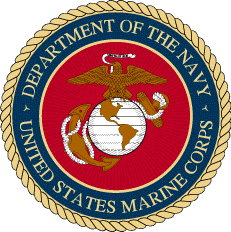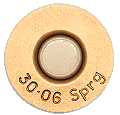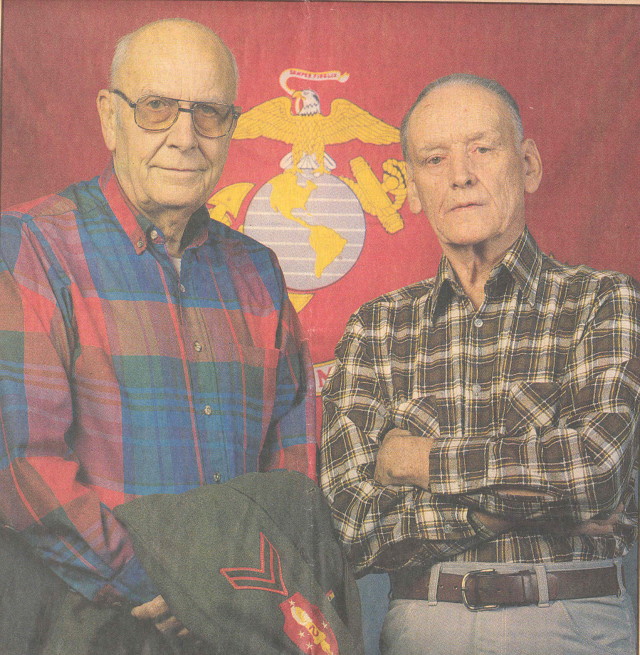| **** | The heros of Tarawa were many. In fact, four Medals of Honor and
a dozen Navy Crosses would issue from this 76-hour brawl. "Hawk" Hawkins, the brooding lieutenant who led his Scout-Sniper unit in a running gun battle down the long pier in the battle's opening
minutes, would earn a Medal of Honor for his final deeds on Earth. Survivors remember the young Texan stomping out of Shoup's headquarters, then coolly ambling across a 75-yard stretch of "moon-scape" howling with enemy fire. He neither ducked, nor ran. When he got to the blockhouse he was aiming for, he dropped an explosive
charge through a gun aperature blowing the redoubt to bits. Then he slowly walked back to his own lines, as calmly as he had come. In several more minutes, he's shot in the chest, but refuses to be
evacuated, Then he mounts an amtrac, turning its 50-cal, machine gun on Japanese targets of opportunity. A
fellow Marine would later recount: "He was a madman. He cleaned out six machine gun nests, with two to six
Japs in each nest. I'll never forget the picture of him standing on that amtrac, riding around with a million bullets a minute whistling by his ears. ... I never saw such a man in my life." Enemy machine gunfire finally
cut him down, though, and he was carried to the rear. "That night," notes battle historian Martin Russ,
"William Hawkins layout under the slowly wheeling Southern Cross. He died before dawn." And the remarkable Lt. Alexander Bonnyman, an assault engineer who fought his way to the top of Shibasaki's blockhouse headquarters, would earn the CMH this day, as well. Bonnyman would hold off a Japanese counter attack bent on driving the engineers from the fortress roof. The engineers destroyed the redoubt with Shibaski inside, but Bon-nyman is killed in the firefight. |
By 1 p.m. on Nov. 23, the battle of Tarawa Atoll had ended. The clash had cost the lives of 1,113 Marines
and 4,819 Japanese - over 20 dead man for every acre of Betio's coral sand. Only 17 Japanese are left alive. And 300 of the American dead still bobbed in the surf near the landing beaches. Another 2,290 Marines had been wounded, many so badly they can never return to fight future battles. The white sand which once bordered the seawall is white no more. Carstens recalls it as stained brown from the endless bloodletting of the hellish three-day brawl. When word of the shocking number of American casualties suffered at Tarawa reaches the United States, there are cries for a congressional investigation. Many demand to know why it was necessary to invade Tarawa at all. Why wasn't the heavily fortified base by-passed? Admiral Chester A. Nimitz receives letters beginning, "You killed my son." Most military historians maintain that Tarawa taught the United States valuable lessons that would save many American lives in the remainder of the Pacific campaign of one amphibious operation after another. One lesson learned is never underestimate the enemy's ability to build defenses that can only be destroyed by a longer and more concentrated naval and aerial bombardment. Some say the invasion of the Gilbert Islands opened the front door to the Japanese empire. And it also gave the Americans an airbase. The 4,000 foot strip, which Sea bees began working on even as Tarawa burned, is promptly named Hawkins Field - a final tribute to the heroism of the "Hawk" of Tarawa Atoll. | **** |











